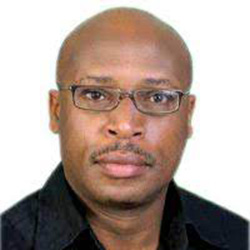Once in a while, ideas pique your interest through articles that come your way. One such is Francis Fukuyama’s article, The Future of History, in the current issue of Foreign Affairs Magazine.


Once in a while, ideas pique your interest through articles that come your way. One such is Francis Fukuyama’s article, The Future of History, in the current issue of Foreign Affairs Magazine. In the article, Fukuyama wonders whether liberal democracy can survive the decline of the middle class. It may be recalled that Fukuyama is the author of the famous (some say infamous) 1989 article, The End of History, that suggested the failure of communism and the downfall of the Soviet Union in that year resulted in the victory of liberal democracy and capitalism, thus the end of history.In the current article, he argues that "stagnating wages and growing inequality will soon threaten the stability of contemporary liberal democracies and dethrone democratic ideology as it is now understood.” What is needed, he says, is a new populist ideology that offers a realistic path to healthy middle-class societies and robust democracies.Taking the example of an advanced society, Fukuyama raises the concern that further development of technology and globalization could undermine the middle class and make it impossible for more than a minority of citizens to achieve middle-class status. "By ‘middle class,’ he means ‘people who are neither at the top nor at the bottom of their societies in terms of income, who have received at least a secondary education, and who own either real property, durable goods, or their own businesses.’In making his point, he notes that inequality has always existed as a result of natural differences in talent and character, but that today’s technological world seems to magnify those differences. Take the example of Microsoft’s Bill Gates, Mark Zuckerberg of Facebook or the late Steve Jobs of Apple and the lucky few who have made their fortunes across the world in the development and production of their products.Then there is the idea of globalization. Fukuyama argues that "with the lowering of transportation and communications costs and the entry into the global work force of hundreds of millions of new workers in developing countries, the kind of work done by the old middle class in the developed world can now be performed much more cheaply elsewhere.” Apple products for instance – the iPhone and iPad – are assembled in China. What about Africa, and specifically the East African Community? A recent report by the African Development Bank (AfDB) estimates the size of the middle class at about 313 million people, or 34.3 per cent of the continent’s population. The middle class were defined as those spending between $2 and $20 a day.Of the above figure, 29.3 million live in East Africa representing an average of 22.6 per cent of the population. All combined, this represents 44.9 per cent of Kenya’s population, 18.7 per cent in Uganda, 12.1 per cent in Tanzania, 7.7 per cent in Rwanda, and 5.3 per cent in Burundi.On the other hand, a 2010 survey in Kenya showed that the country’s middle class has been shrinking. The survey found that the middle income segment had contracted to a mere 18 per cent from 27 per cent in 2005 due to rising inflation.While democracy is taking root in Africa, the shrinking middle class could be happening anywhere on the continent. This is not precluding Fukuyama’s persuasive arguments.Twitter: @gituram




